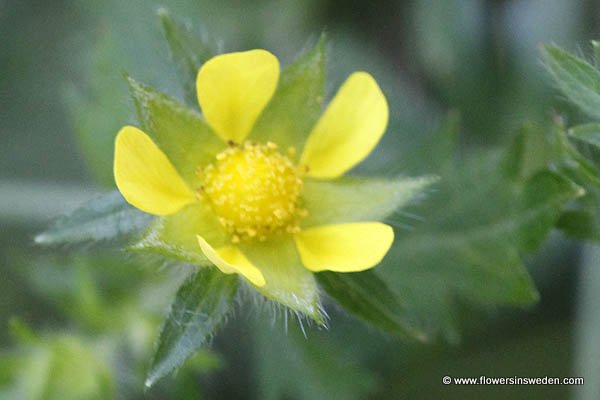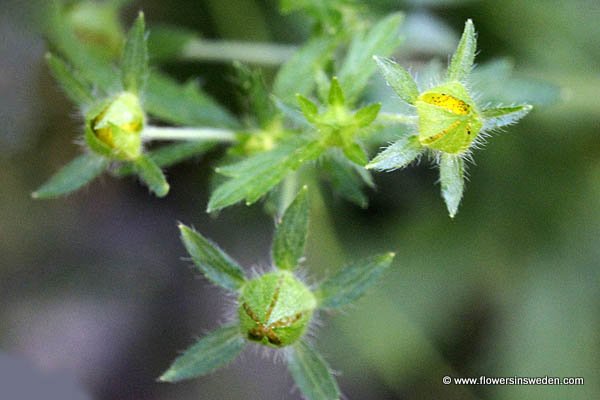
| Scientific name: | Potentilla norvegica L. | |
| Synonym name: | Potentilla monspeliensis L. | |
| Swedish name: | Norsk fingerört | |
| German name: | Norwegisches Fingerkraut | |
| Nederlandse naam: | Noorse ganzerik | |
| English name: | Norwegian cinquefoil, Rough cinquefoil, Strawberry-weed, Ternate-leaved Cinquefoil | |
| Family: | Rosaceae, Rose family, Rosväxter |

|
| Life form: | Annual, biennial | |
| Stems: | Height 10-50 cm, flowering stalks, ascending to erect; hairs spreading, sparse and long below, denser and shorter above; often reddish green, alternate trifoliate leaves | |
| Leaves: | Rosette; basal leaves, trifoliate with long hairy petioles; leaflet obovate or oval, coarsely serrated, and slightly hairy across the upper surface | |
| Inflorescence: | Terminal inflorescence, panicle of cymes; leafy bracts, hairy stems with a tendency to zigzag between the cymes of flowers | |
| Flowers: | 5 yellow petals, obcordate; 5 green sepals, triangular, spreading, slightly longer than the petals; 10-20 stamens with yellow anthers; a yellow dome-shaped receptacle; under each flower, 5 green bracts, spreading, ovate-triangular | |
| Flowering Period: | June, July, August, September | |
| Fruits: | seeds somewhat flattened, asymmetrically reniform, veined, light brown | |
| Habitat: | Ruderal | |
| Distribution: | Common throughout the country, from Skåne to Torne Lapland |
 Derivation of the botanical name: Potentilla from the Latin, potentia, "might, force, power". norvegica, Norwegian. monspeliensis, of Montpellier in southern France.
|